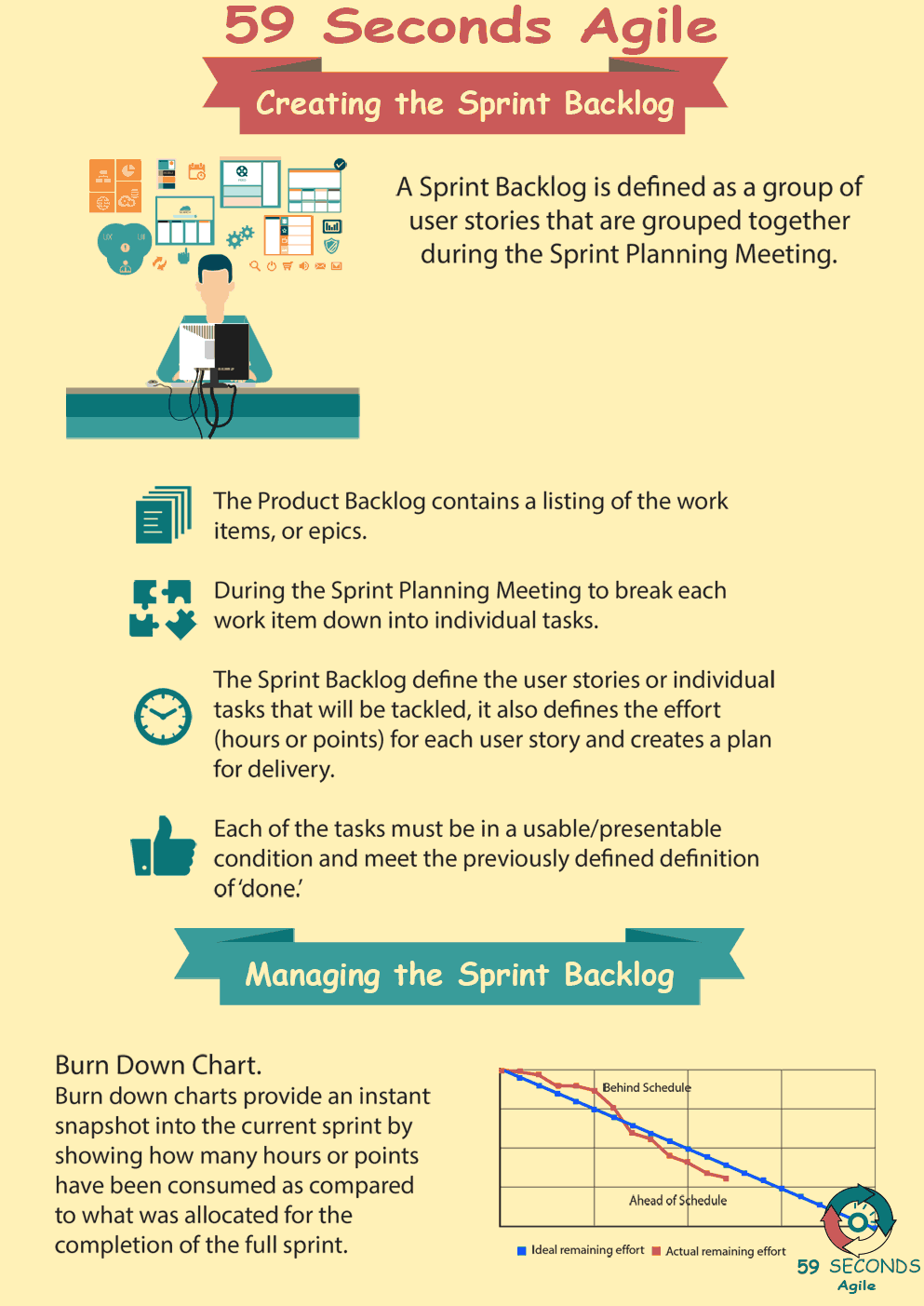What is the Sprint Backlog and who is involved in the Sprint backlog Generation process? Sprint backlog is an important artefact of the Sprint and it is an essential aspect of every Sprint.
Creating the Sprint Backlog
A 59 Seconds Agile Video Animation
Creating the Sprint Backlog for Developers – Part 2
A 59 Seconds Agile Article
The last bit of input for creating the sprint backlog is knowing what metrics to track. After selecting tools and methods, the Scrum team must decide on what adequately measures progress in the sprint. A good set of metrics allows the team to see overall progress, as well as the progress of each individual member. Agile tends to avoid traditional metrics like lines of code or number of commits. These single out developers and put pressure on individuals. Better metrics show the overall health of a project. If certain tasks are falling behind schedule, other developers can step in to make sure the work is done by the end of the sprint.
Sprint Backlog Generation: Output
The sprint planning meeting generates several outputs. Obviously, the sprint backlog is one of these and considered the most useful. It gives the Scrum team, and developers, in particular, a list of tasks to complete the sprint. In addition to functioning as a to-do list, it also gives a definite indicator of remaining work. If a sprint starts with 20 tasks, each of these completed is one less thing that the Scrum team must do. For developers, the sprint backlog comprises every part that must be done for a feature to be finished. When developers have finished all of their tasks in the sprint backlog, a feature should be functional. It may have errors that will be fixed in testing but should mostly behave as designed.
In addition to the sprint backlog, the sprint planning meeting should also produce a burn-down chart. This is a visual indicator of the current progress on a sprint, versus how much needs to be completed each day to be finished on time. If the team is above the line, they must work faster than average to catch up. Any time the team is below the line, they are ahead of schedule and can afford setbacks.
Sprint Backlog Generation: Burn-down Chart
While the burn-down chart isn’t perfect, it does give a general idea of the Scrum team’s progress. Developers must keep in mind that new development should not take up the entire sprint. When new development is finished, other roles must go through testing and approval. If testers find bugs in the code, developers need to have enough time to fix these issues. More development should be completed earlier in the sprint, and less as the sprint goes on.
The sprint backlog is a useful piece in Agile software development, but it does require work. With the proper meetings and tools, a Scrum team can create a backlog that will keep them busy for the duration of the sprint. Appropriate metrics for each role will make sure the entire team stays on pace. Developers specifically need the sprint backlog, both to see what remains to be completed and whether they are on track to finish in time.
Prev <— Continue Reading —> Next
Learn More: The Agile Sprint Backlog
User Stories Applied
A 59 Seconds Agile Book Review
User Stories Applied by Mike Cohn is one of our favourite books on Agile User Stories. The book starts with an overview into user stories, and details what a user story is and the different aspects of them. He then discusses how to go about writing a user story, and provides details of the INVEST criteria that can be used to determine if the story is meeting all of its objectives. Next Mike gives an in depth discussion of who user stories are written for and where to begin when gathering the details for them. The book then discusses acceptance testing user stories, including how to go about specifying these criteria and the responsibilities of the development team and customers during this process.
Prev <— Continue Reading —> Next
Learn More: The Agile Sprint Backlog
Creating the Sprint Backlog
A 59 Seconds Agile Infographic

Prev <— Continue Reading —> Next
Learn More: The Agile Sprint Backlog
Our Favourite Agile Books
We found these books great for finding out more information on Agile Scrum:
